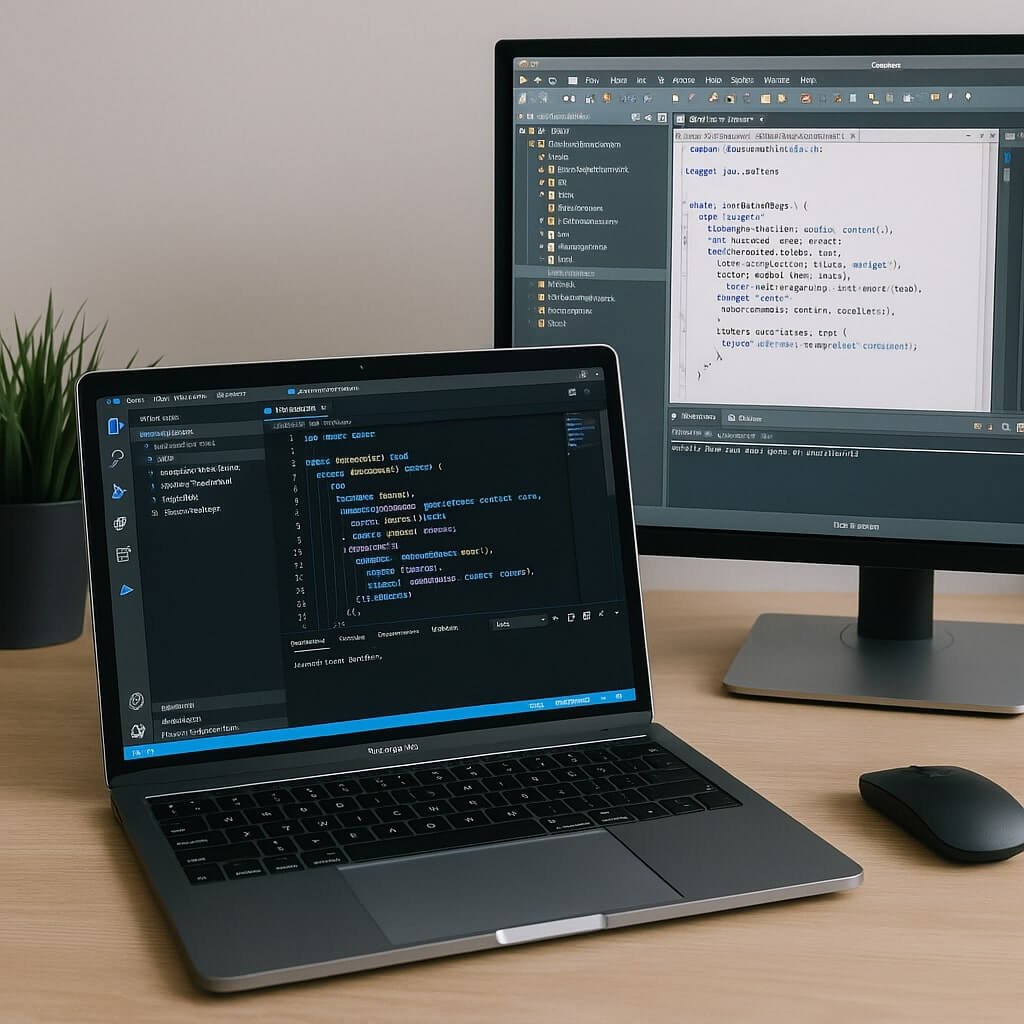In today’s tech landscape, cross-platform development is no longer a luxury—it’s a necessity. Whether you’re building applications for Windows, macOS, Linux, Android, iOS, or the web, choosing the right free IDE (Integrated Development Environment) can save you time, boost productivity, and streamline your workflow. With 2025 underway, it’s time to evaluate the best free IDEs that every serious cross-platform developer should consider.
Why a Great IDE Matters
An IDE isn’t just a code editor—it’s your development command centre. With features like syntax highlighting, debugging, refactoring tools, integrated terminal, and plugin ecosystems, a good IDE enhances efficiency and code quality while reducing the chance of errors. But cross-platform coders need more: support for multiple languages, flexible build tools, version control, and native testing options across devices.
Top Free IDEs for Cross-Platform Developers in 2025
1. Visual Studio Code (VS Code)
- Platforms: Windows, macOS, Linux
- Languages: Supports JavaScript, Python, C++, Java, Dart, and more
- Why It’s Great:
- Lightweight yet powerful
- Vast marketplace of extensions
- Git integration, Docker support, and Remote SSH
- IntelliSense and real-time debugging
Best for: Developers who want a highly customizable, plugin-rich environment that supports virtually any language or framework.
2. Eclipse IDE
- Platforms: Windows, macOS, Linux
- Languages: Java, C/C++, PHP, Python, JavaScript
- Why It’s Great:
- Battle-tested with enterprise-level capabilities
- Plugins for Android, web, and cloud development
- Strong Java ecosystem and debugging tools
Best for: Enterprise-grade cross-platform Java developers who want flexibility with plugin support.
3. JetBrains Fleet (Free Tier)
- Platforms: Windows, macOS, Linux
- Languages: Kotlin, Java, Python, JavaScript, Go, and more
- Why It’s Great:
- JetBrains’ lightweight next-gen IDE
- Smart collaboration and remote development
- Modern interface and fast startup
Best for: Developers seeking a modern and minimalistic alternative to IntelliJ, with team coding capabilities.
4. IntelliJ IDEA Community Edition
- Platforms: Windows, macOS, Linux
- Languages: Java, Kotlin, Groovy, Scala
- Why It’s Great:
- Code inspections, refactorings, and Maven/Gradle build tools
- Excellent for Android and Java-based apps
- Smooth Git and GitHub integration
Best for: Android and JVM developers focused on stable, high-performance tooling.
5. Code::Blocks
- Platforms: Windows, macOS, Linux
- Languages: C, C++
- Why It’s Great:
- Modular, plugin-driven architecture
- Customizable compiler support (GCC, Clang)
- Ideal for embedded systems and low-level dev
Best for: Cross-platform C/C++ development, especially in systems programming.
6. Xamarin with Visual Studio Community Edition
- Platforms: Windows, macOS
- Languages: C#
- Why It’s Great:
- Build native apps for iOS and Android using .NET
- Shared codebase across platforms
- Rich design tools and simulators
Best for: Mobile developers using C# and .NET who want native performance.
7. Flutter + Android Studio (Free)
- Platforms: Windows, macOS, Linux
- Languages: Dart
- Why It’s Great:
- Excellent for building beautiful UIs
- Hot reload and multi-device previews
- Rich widget set for iOS and Android
Best for: Mobile and web developers creating cross-platform UIs with a single codebase.
8. VSCodium
- Platforms: Windows, macOS, Linux
- Languages: Same as VS Code
- Why It’s Great:
- Open-source build of VS Code without telemetry
- Same ecosystem and extension support
- Privacy-focused
Best for: Developers who love VS Code but want an open-source and telemetry-free version.
What to Look for in a Cross-Platform IDE
- Multi-language support
- OS compatibility
- Plugin ecosystem
- Debugger and testing tools
- Version control integration
- Performance and memory footprint
Honourable Mentions
- NetBeans: Great for Java and HTML5 web apps
- Geany: Lightweight and ideal for low-resource systems
- KDevelop: Tailored for C/C++ but extensible
- Theia IDE: Cloud and desktop IDE built with TypeScript
FAQs: Cross-Platform IDEs in 2025
What is the best free IDE for cross-platform mobile development?
Flutter with Android Studio and Xamarin with Visual Studio Community are excellent free options for building cross-platform mobile apps using a single codebase.
Is VS Code better than IntelliJ IDEA for cross-platform development?
VS Code is more lightweight and versatile across languages, while IntelliJ IDEA (Community) is optimised for Java/Kotlin with powerful built-in tools. Choose based on your primary language and workflow.
Are there truly free IDEs with no hidden costs?
Yes, IDEs like VS Code, Eclipse, Code::Blocks, and IntelliJ IDEA Community Edition are genuinely free without mandatory subscriptions.
Can I use one IDE for both frontend and backend?
Absolutely. IDEs like VS Code and JetBrains Fleet support full-stack development with extensions or built-in features for JavaScript/Node.js, Python, Go, and more.
Which IDE is best for low-end PCs?
Geany, VSCodium, and Code::Blocks are excellent for low-resource systems due to their lightweight nature.
Conclusion
Choosing the best free IDE for cross-platform coding in 2025 depends on your language stack, system specs, and workflow preferences. Whether you’re building mobile apps, desktop tools, or cloud solutions, there’s a powerful and free IDE tailored to your needs.






